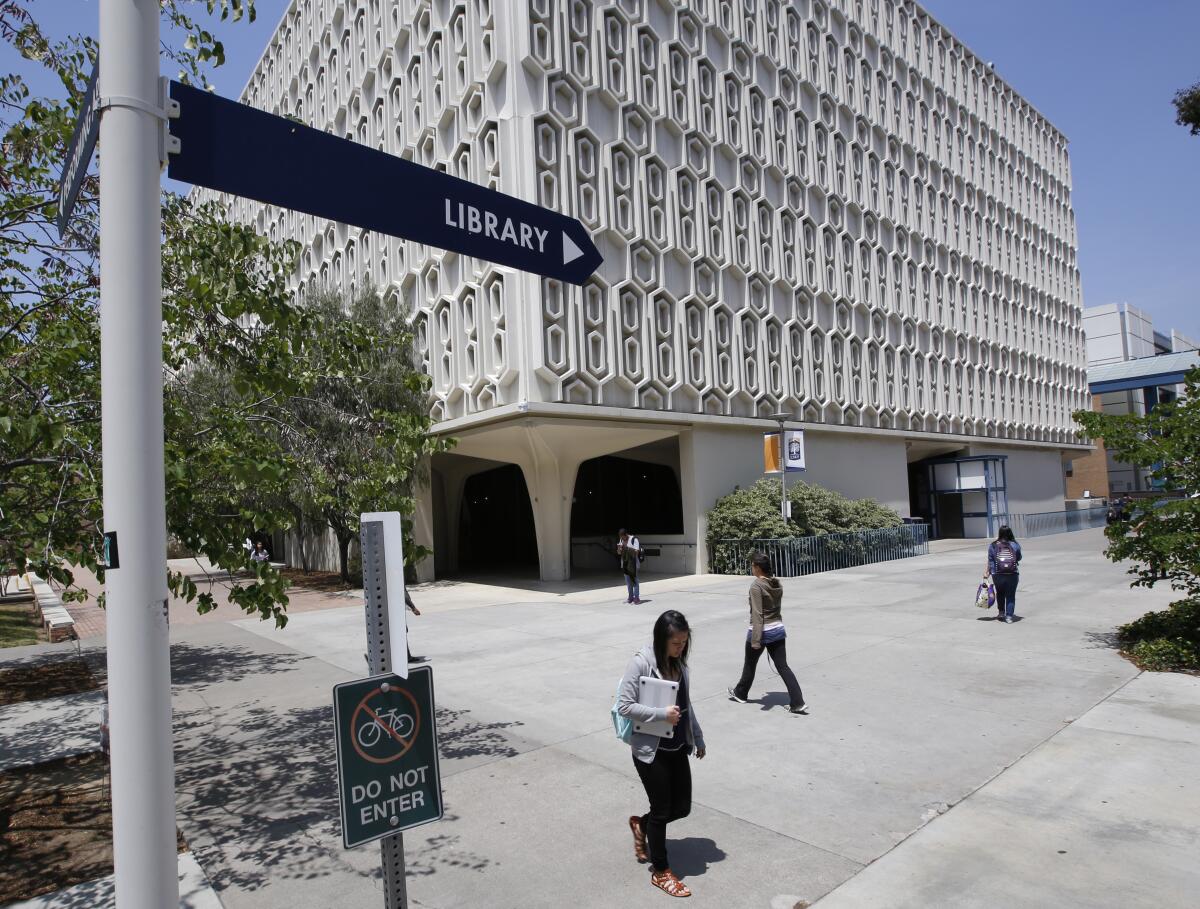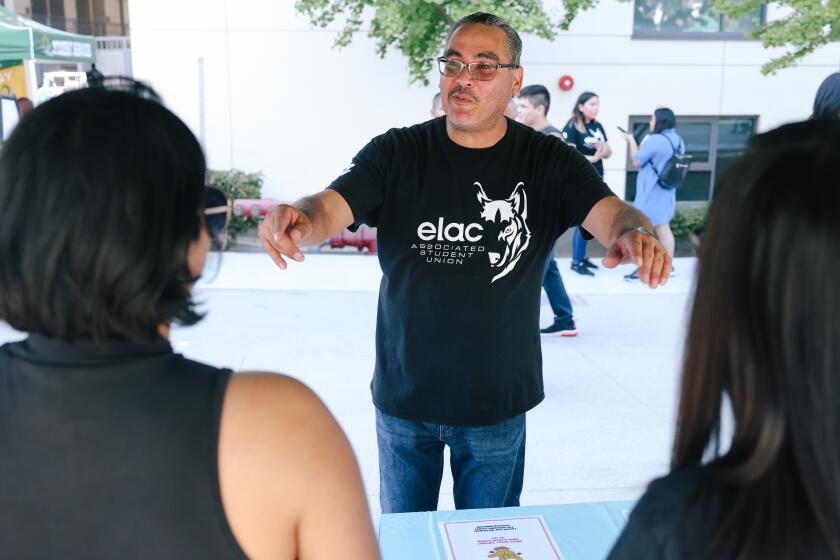California fall undergraduate enrollment declines have slowed, but still ‘troubling’

- Share via
Colleges nationwide and in California continue to lose undergraduate students, but the declines have slowed compared to the last two years, when the pandemic upended education, a national report shows.
California saw a 1.1% drop in undergraduates, a slower decline than last fall when enrollment dipped 5.9%, according to preliminary fall 2022 data released Thursday by the National Student Clearinghouse Research Center. Nationally, the rate of undergraduate declines also slowed to 1.1%, a significant slowdown from fall 2021, when enrollment dropped 3.1%.
“I certainly wouldn’t call this a recovery,” said Doug Shapiro, the research center’s executive director. “We’re seeing smaller declines, but when you’re in a deep hole, the fact that you’re only digging a tiny bit further is not really good news.”
For the first time since the COVID-19 pandemic, the declines nationwide are steeper at four-year schools than at community colleges, which have benefited from double-digit increases in high school students dually enrolled in college-level classes. While highly selective colleges saw a small increase in students, less selective colleges had greater losses, the report said.
“Undergraduate enrollments are still falling in this term. The rate of decline is lower than it’s been, but after two straight years of historically large losses in student enrollments, it’s particularly troubling that the numbers are not climbing back after this point, especially among freshmen,” Shapiro said.
The number of first-year students enrolled nationally dipped 1.5%.
The 2022 data show four-year institutions were hit the hardest: There was a 3.1% dip among private nonprofit institutions, a 2.4% decline at public institutions and a 0.9% drop at for-profit institutions.
Community colleges offered a bright spot.
The report notes that an 11.5% jump in dual-enrolled high school students helped to soften the enrollment decline at community colleges to 0.4%. Community colleges nationwide saw a 1.4% increase in students 18 to 20 years old and first-year students increased 0.9%, which the report calls a sign that their numbers are stabilizing for the first time since the pandemic forced campus closures in spring 2020.
California community college students say taking classes online allows them to juggle work and family, and pursue their dreams of higher education.
“Many four-year institutions are still below their freshman numbers from last year, much less going back to their freshman numbers from 2019, which is very concerning,” Shapiro said. “And I think even the increase in community college freshmen is still small and nowhere near recovering from the huge declines in community college freshmen that we saw in fall of 2020 and fall of 2021.”
The increases at lower-cost community colleges while declines are occurring at four-year colleges suggests that costs are playing a role, Shapiro said: “That’s highly suggestive to me that affordability is a part of the equation.”
Although the data set is small and may change, the report said online institutions showed a 3.2% enrollment jump and undergraduate enrollment of historically Black colleges and universities grew 2.5% this fall, due to increases in the numbers of first-year students.
White students had the steepest decline in undergraduate enrollment, dropping 3.6% since last year. Black student numbers declined by 1.6%. Both Asian and Native American students declined by 0.8%. The number of Latino students increased by 1.2%. Female undergraduate students declined by 2.1%, while male students declined by 0.7%.
The center’s data come from 63% of degree-granting institutions that receive federal funds and represents 10.3 million undergraduate and graduate students in the country. The California results are based on 47% of the institutions.
Times staff writer Teresa Watanabe contributed to this report. Emma Gallegos is a reporter for EdSource, a nonprofit, nonpartisan journalism organization covering education in California.
More to Read
Sign up for Essential California
The most important California stories and recommendations in your inbox every morning.
You may occasionally receive promotional content from the Los Angeles Times.














